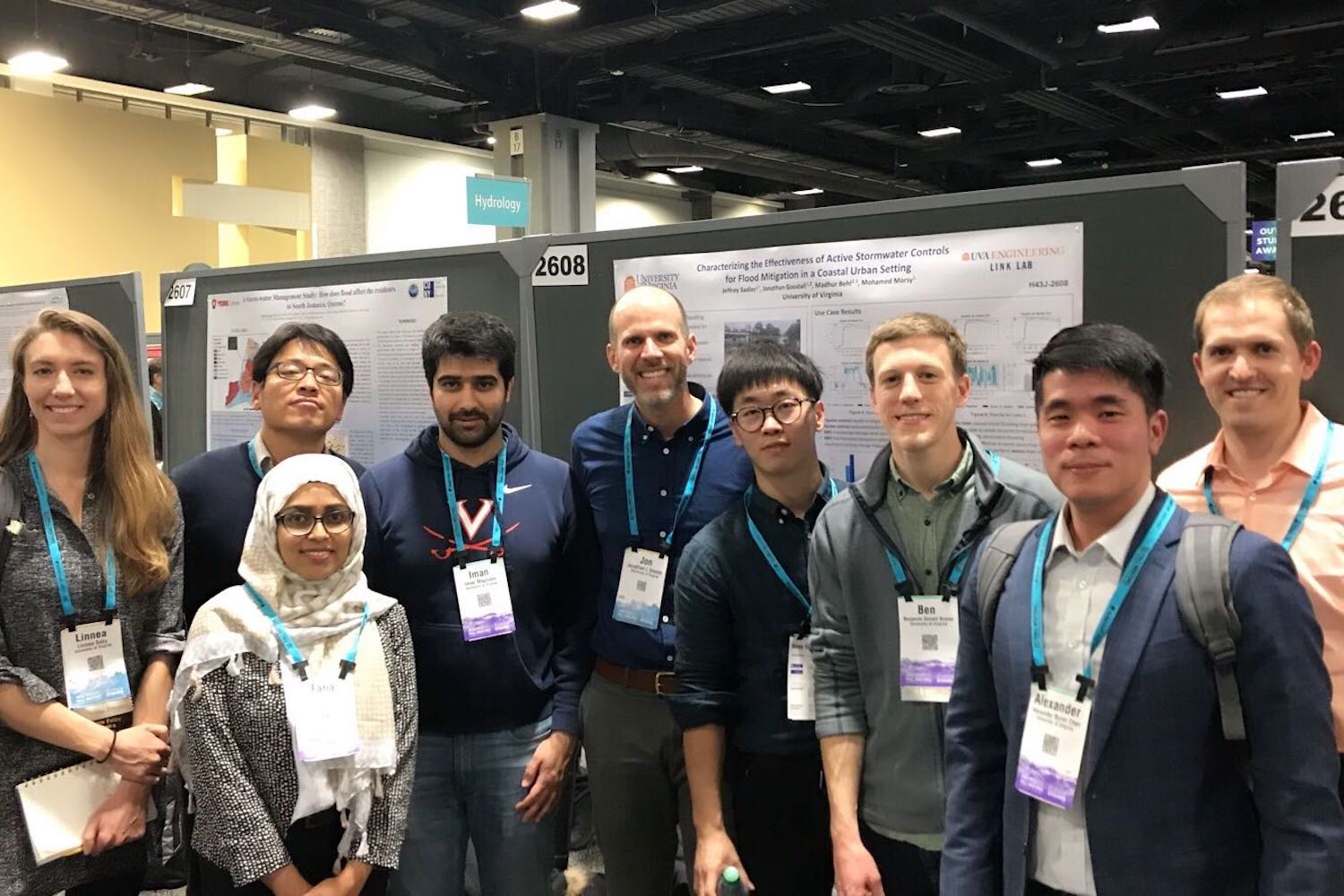Research Interests
Our research is in the interdisciplinary field of hydroinformatics that combines water resources engineering, hydrology, computer science, and data science. The goal of our research is to leverage advances in computing and data science to address problems and challenges associated with water resources management such as improving community and infrastructure resilience to climate change. Climate change is resulting in more intense storms and rising sea levels that are causing significant water-related impacts for many communities across the world. We believe that innovations in hydroinformatics can help communities adapt to these new environmental conditions. Below are a few areas we are currently researching in our team.

UVA Hydroinformatics Group members at the American Geophysical Union Fall Meeting, 2018
Smart Stormwater Management
Stormwater infrastructure is designed to mitigate the impacts of urbanization caused by increased runoff. This increased runoff, if not properly handled by stormwater infrastructure, can not only increase flooding risks, but also pollute downstream waterbodies. We are interested in innovate ways to management stormwater including smart stormwater monitoring and control, decisions support systems for stormwater management, and stormwater modeling. For this work, we are leveraging ideas from the field of cyber-physical systems (CPS) to advance stormwater management systems under the broader concept of smart cities. Climate change and sea level rise are major drivers for this needed change where existing infrastructure could be enhanced at a lower cost to address changing environmental conditions.
High-Resolution Urban Flooding
While our ability to forecast severe weather has significantly improved over past decades, our ability to forecast on-the-ground flooding impacts at a high spatial resolution is lacking. This problem is challenging due to the complexity of modeling floods over landscapes, especially urban landscapes. We are advancing computational methods, data management schemes, and GIS-based visualization approaches for urban flooding. We are interested in decision support systems to engage stakeholders in flood warning, disaster response, and efforts to increase community resilience. Much of this work is focused on impacts to transportation and other critical infrastructure before, during, and following flooding events.
Cyberinfrastructure for Hydrologic Modeling
Cyberinfrastructure is the underlying technology that is enabling new ways to model hydrologic systems. It includes high performance computing (HPC), cloud computing, automated workflows, geospatial data analysis, containerization of legacy modeling codes, and other advances needed for the general reproducibility of computational hydrologic modeling. We have been long-term members of national teams building advanced cyberinfrastructure for the hydrologic science and engineering communities through our partnership with the Consortium for the Advancement of Hydrologic Science, Inc. (CUAHSI). This research has resulted in the CUAHSI Hydrologic Information System (his.cuahsi.org) and the CUAHSI HydroShare system (www.hydroshare.org). It has also resulted in partnerships with computer scientists funded through the NSF EarthCube and related cyberinfrastructure programs to advance the state of the art in scientific cyberinfrastructure.